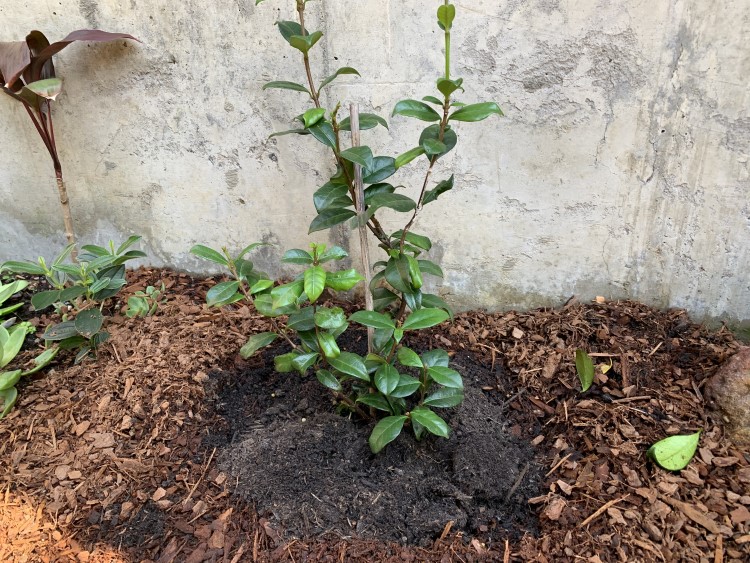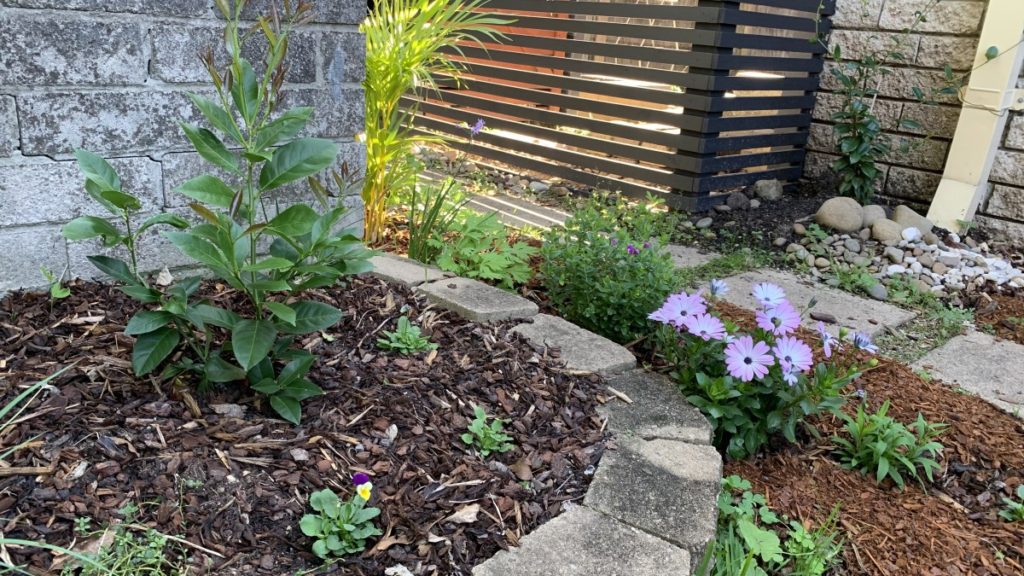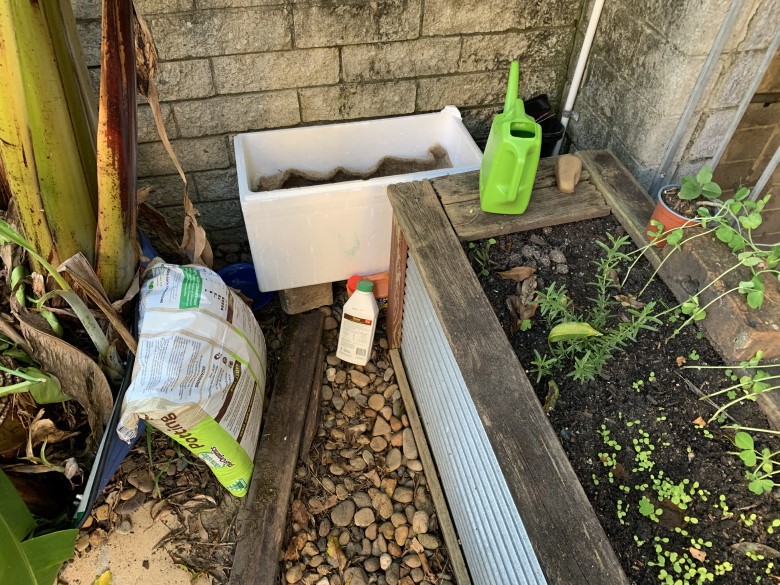Place well aged compost on top of your garden soil and plant seedlings or larger plants straight into it. Compost can also be dug into flower beds or vegetable gardens to increase organic matter, improve soil structure and supercharge microbe activity. Plant pumpkins, potatoes and onions on top of compost for an easy, weed free garden bed.
Planting vegetables on top of compost
Compost that has broken down completely will be in a form that will support great plant growth. If you have very poor soil, you can place a 1-2 foot layer of compost on top and plant vegetables straight into it.
It can also be beneficial to dig the compost through your garden soil. This will start the process of improving poor soil by adding air, organic matter and moisture.
All soil types benefit from the addition of compost and it is perfect for growing vegetables such as corn, carrots, tomatoes, peppers and broccoli.
I have had many different compost bins across many houses. Starting with 2 large bins made from (crates) which we had at our small hobby farm in the Barossa Valley. This was a great set up as I could have one breaking down as I filled the other one. Here is a great video on how to make a larger compost bin at home if you are on a big property.
What I found with these compost bins was that I often would get vegetable scraps growing into plants on top of my compost. This would include pumpkin grown from pumpkin seeds, potatoes, peppers, and even onions.
How to grow pumpkins on top of compost
Pumpkin seeds can be planted straight into the top of well aged compost in large bins or containers. If you are lucky enough to have a pumpkin seed sprout on top of your compost bin, I would let this grow and see if you get any pumpkins. They love a rich, moist soil which is why they will often sprout in compost piles.
Growing potatoes on top of compost
If you find that you have potatoes starting to sprout in your compost I would definitely dig them in with a spade or fork. If they have sprouted from potatoes you have bought from a supermarket, they are likely to be a hybrid and maybe treated with a chemicals. This can stop them from sprouting and growing a productive plant.
To grow potatoes in compost, head to a garden center or hardware store and get certified seed potatoes. These will be ready to plant in your garden and will grow into the type of potato you want.
Growing onions on top of compost
If you have thrown a whole onion, or even a part of the root system, you will find that these can often sprout and start to grow in your compost bin. I would recommend digging these in or cutting them up with a spade. They are unlikely to grow into anything useful but you could experiment and see.
How long to let compost sit before you plant in it
If your compost has fully broken down before you add it to your garden, you can plant in it straight away. If you are making your own compost in a pile or compost bin, wait until all of the vegetable matter including food scraps, leaves, straw and bark chips have fully broken down and look dark like soil.
To help your compost to break down quicker, mix it regularly with a garden fork or compost stirrer, make sure you water it and keep it moist and add a mix of green and brown materials.
Green materials include vegetable scraps, weeds and coffee grounds. Brown materials include straw, cardboard, dry leaves and fine bark chips. Your compost can take anywhere from 2 months to around 6 months to fully break down.
How to use compost so it will not hurt plants
Compost will not hurt plants unless you add it over the top of them and smother them. Top-dressing soil around plants with compost is a great way to add extra nutrients to soil but just remember to keep it away from plant stems and don’t cover the leaves.
Compost can hurt plants if it has not broken down fully when you add it. If there are still large bark pieces or rotting vegetable matter it can take up nitrogen from your plant and starve it. Just make sure any compost you add to your plants is fully broken down, it looks dark and has some moisture. Add a thin layer to the top of garden beds or dig it into a new area to grow your vegetables or flowers.
Warmer weather and mixing often will increase the rate at which your compost breaks down, but sometimes it is just a matter of waiting.
Should compost be left on the top of a garden bed?
Compost should be dug into the soil and topped off with mulch. To add nutrients, carbon, moisture and good bacteria to your soil, compost is the perfect ingredient and will work best when dug into the soil. If you leave compost on top of the garden bed without digging it in, it can blow away in the wind. Compost can be very light and is quick to take off when wind gusts come.

Without mulch on top, compost can also go dry and your plants won’t love growing in it. For flower beds and citrus trees I would top it off with a pine bark mulch. For vegetable beds I usually use straw or lucerne mulch as it breaks down quicker and can be dug into the vegetable bed once you are ready to replant your vegetables.
How to use compost on lawn
If you are laying a new lawn it is a great idea to add compost to the soil first and plant the lawn on top. This can be worked into the soil first then add a layer of sand directly underneath your lawn. Make sure you use a roller first to get a smooth place to lay your lawn.
If you have an established lawn, compost can be added as a top dressing. To give your lawn an extra boost, add a thin layer of compost to the top. Add some air holes into the lawn with a fork or lawn aerator first so the compost can work its way down. Then rake the compost in and spread it out evenly.
How to use compost for citrus trees
Citrus trees are hungry plants so before you plant them in your garden, dig through some good quality organic compost, pelletized chicken manure and aged cow manure. Dig this through the ground soil well before digging a hole to plant your citrus tree.

I have recently bought a very small lemon tree only 2 months ago which has tripled in size since I planted it using this method. Compost is a fantastic ingredient to get your citrus growing well. You can then add a thin layer to the top of your citrus trees twice a year in spring and fall. This will help to keep them growing well, adding a good layer of nutrients which will be watered in when you or the rain waters the tree.
Just remember to add compost gently and not to disturb the shallow feeder roots of the citrus tree. These sit very close to the surface but are ready to take in the nutrients from your compost.
How to make compost in a small garden
If you don’t have space for a compost bin, many people have turned to keeping worm farms instead. I have just made my own tiny worm farm using a Styrofoam box thrown out by my neighbors. I then added a coconut coir brick and a worm blanket on top. This tiny worm farm will compost all the food scraps my family uses each week.

From this tiny worm farm I also get worm juice which I use on all of my garden including vegetables and herbs. After 2-3 months it will be ready to have some worm castings removed to add to my garden like compost.
Worm castings are what is left after the worms break down the vegetable scraps and is a rich source of nutrients which can be mixed or watered into my garden beds. This is a great alternative if you don’t have space for a compost bin.
Another option is to buy an organic compost mix from your local garden center. I have used these as well and they work great. I always choose an organic option and mix these through my garden soil before planting.
Does compost turn into soil?
Compost turns into something like soil, it contains carbon and all of the nutrients from the broken down plant matter from your vegetables scraps. Compost is different to soil because it doesn’t contain sand, clay, minerals or rock particles that exists in soil. That is why compost works best when dug through your ground soil to add extra nutrients and water holding ability.
Plant on top of compost | Summary
Compost is a rich organic matter that is perfect for planting vegetables, citrus and flowers into. Make sure it is well rotted, a dark brown color resembling soil. This will support your plant’s growth and improve the soil over time.
Happy gardening.
I am an accredited practicing dietitian, experienced gardener and a dedicated cook. I love writing and sharing my experience so you can learn from my successes and mistakes.

Comments are closed.